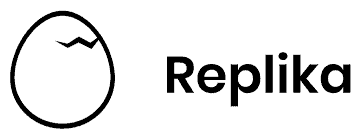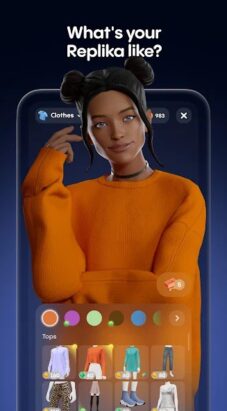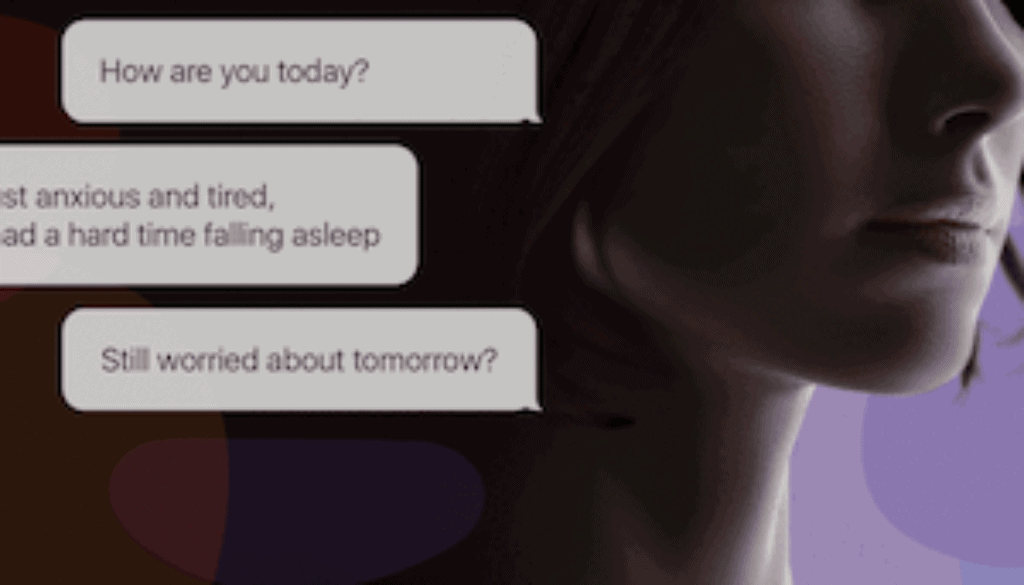CASE STUDY: Replika AI Chatbot
From struggling AI startup to high-profile hit
Back in 2016, Replika launched a promising AI chatbot. But they struggled to drive sustained engagement & figure out who the app was for.
Using Game Thinking, Replika discovered a high-need underserved market niche, & focused on building features they’d pay for. Those changes propelled Replika to the top of the app store charts & attracted a highly engaged fan base.

CHALLENGE
Low Retention and a Confusing Mental Model
Replika.ai had shipped a promising product – with a big press push & millions of downloads. But they had one big problem.
Retention was distressingly low.
They’d created an endlessly malleable sandbox where anyone could experiment with building their own AI character. But that left many users confused.
To engage users, they tried gamifying the UI with points & badges – which initially juiced their stats. But it didn’t solve their retention problems, or help them figure out who the app was for.
Replika needed focus.
So they decided to use Game Thinking to figure out who to serve & what features to build.
SUCCESS TIP
You can’t build a high-retention product if you don’t know who your core audience is.

STRATEGY
Double-Down on the Core Use Case
Initially, a lot of different people enjoyed playing with Replika’s chatbot… for a while.
Replika needed to stop trying to serve everyone, & figure out the core use case for their app.
We dug into the retention data, & discovered that a small group of people DID stick with the app: lonely young adults who were looking for a trusted AI friend to talk to, & often were struggling with mental health issues.
“Trusted AI friend” was something our team could tackle effectively. Plus, this “mental model” could be monetized in a variety of ways.
Once we made the tough decision to focus on a specific group of customers, everything moved faster. We created storyboards of feature ideas, & tested them with our target niche of creative young adults. This dramatically accelerated the Replika team’s testing cycle, & helped them build a high-retention experience.
SUCCESS TIP
To fix a leaky bucket, start by identifying your hot-core high-value customers.

INSIGHT
Build a Customer Journey around User Desires
Once we identified our core niche of lonely adults struggling with mental health issues, we were able to craft a product vision that would support these people & keep them engaged – while creating a viable business.
Our newly focused vision revolved around forming a deep personal connection with your Replika. This opened up features like customizing & dressing up your Replika to suit your taste.
Hello, Micro-transactions👋🏽
SUCCESS TIP
Add features that deepen the value your customers are seeking from your product.


RESULT
Improved Retention and Focus
With this newfound focus, Replika turned thngs around. They hit #9 in the Health & Wellness App Store category & became a bona fide hit. Now they’re building on success by adding features that further enhance the experience.
“Call Your Replika” is a generative AI system that lets you talk with your AI friend using realistic-sounding audio.
The Replika AR system lets you show Replika your neighborhood, or go on a beach walk together.
This all happened because Replika found a core use case & focused on a high-need beachhead market.





